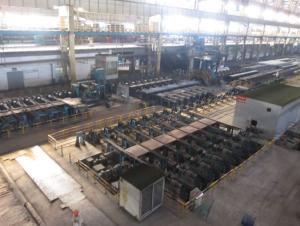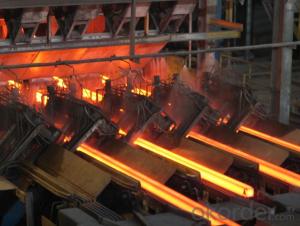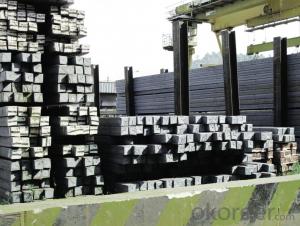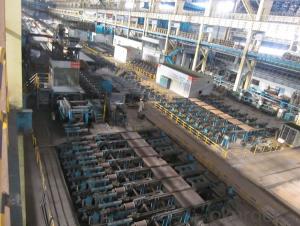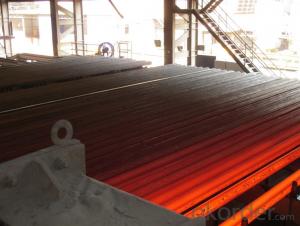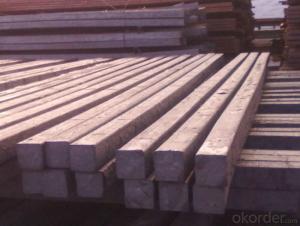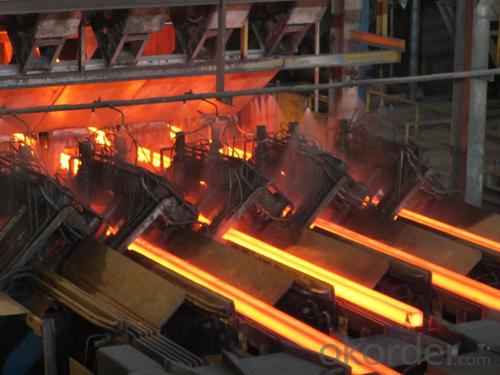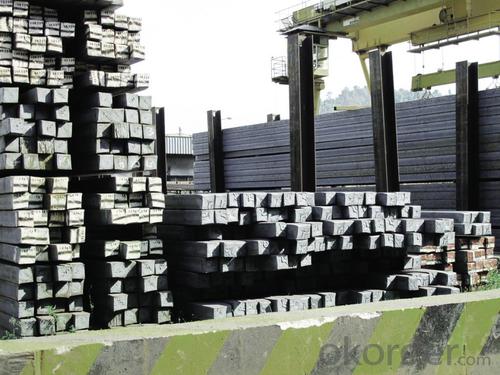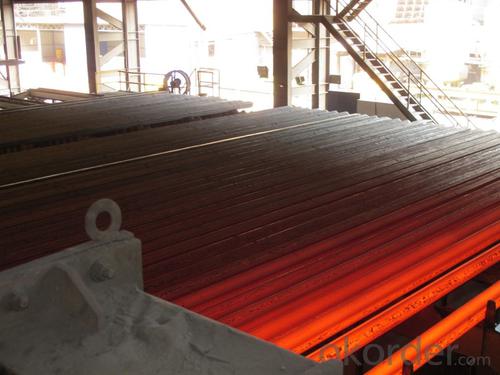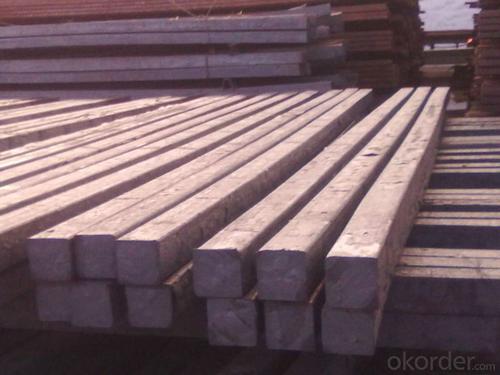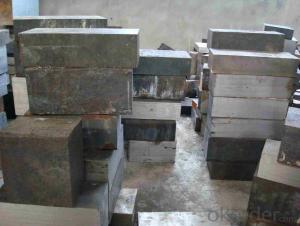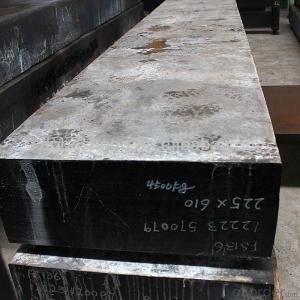Hot Rolled Steel Billet 3SP Standard 110mm
- Loading Port:
- Shanghai
- Payment Terms:
- TT OR LC
- Min Order Qty:
- 100 m.t.
- Supply Capability:
- 10000 m.t./month
OKorder Service Pledge
OKorder Financial Service
You Might Also Like
Structure of Hot Rolled Steel Billet 3SP Standard 110mm

Description of Hot Rolled Steel Billet 3SP Standard 110mm
Prepainted Rolled steel Coil is a kind of coated steel coil/sheet. With the cold rolled steel of different strength and thickness as substrate, it is produced through applying Al-Zn coat on both faces by hot dip process. In its coating, Al accounts for about 55%, Si 1.6%, while the remaining is Zn. Aluminum zinc coils enjoys both the physical protective feature and durability of Al and the electrochemical protective property of Zn. And its surface has bright silver color and regular embossed-like figure, which are highly decorative. RAL Scale Z35 Prepainted Rolled Steel Coil for Construction Roofing

Main Feature of Hot Rolled Steel Billet 3SP Standard 110mm
1.Corrosion resistance: It mainly depends on the zinc protection. When the zinc being worn,
2. Heat resistance: steel sheet has excellent heat resistance, can withstand high temperatures over 300 centigrade, and is similar with aluminized steel high temperature oxidation resistance. It often used in chimney pipes, ovens, fluorescent lighting device and the device cover.
3. Heat reflective: Galvanized steel plate heat-reflective high rate is twice as galvanized steel, often used to make insulation materials. RAL Scale Z35 Prepainted Rolled Steel Coil for Construction Roofing
Applications of Hot Rolled Steel Billet 3SP Standard 110mm
1. Construction and building: roofing; ventilating duct; handrail; partition panel;etc.
2. Electric appliance: refrigerator; washing machine; refrigerator; DVD;etc.
3.Transportation: oil tank; gas tank;road sign; etc.
4.Agriculture constructions :barn; etc.RAL Scale Z35 Prepainted Rolled Steel Coil for Construction Roofing
5.Others:vending machine; game machine; auto parts spare parts etc.
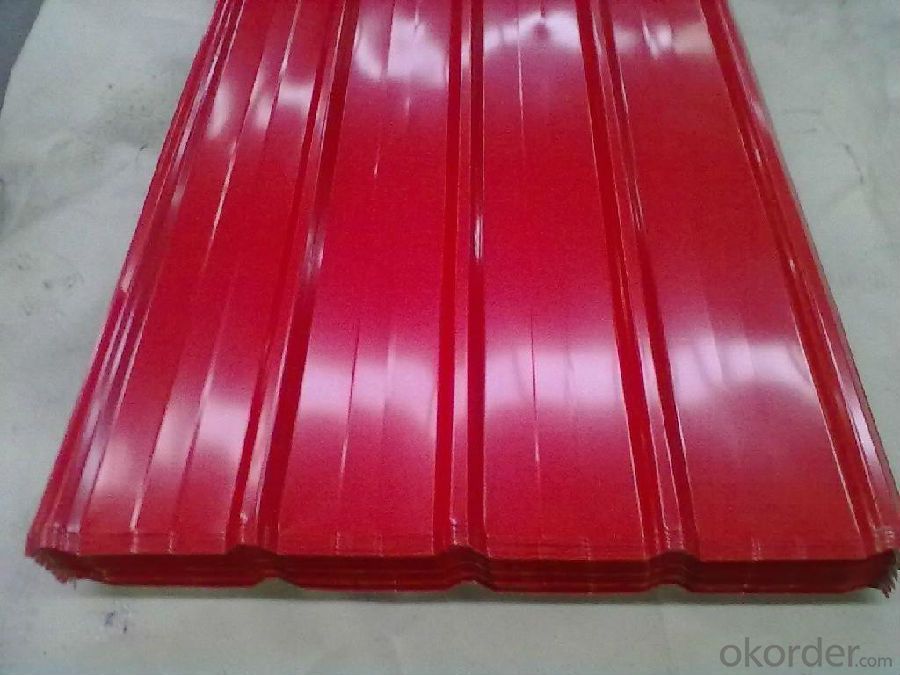
Specifications of Hot Rolled Steel Billet 3SP Standard 110mm
Product | Hot Rolled Steel Billet 3SP Standard 110mm |
Material Grade | SGCC / SGCH / DX51D+AZ, etc |
Thickness | 0.5-3.0mm |
Width | 700-1500mm |
Tolerance | Thickness: +/-0.02mm , Width:+/-2mm |
Zinc-coating | AZ30-150g/m2 |
Technique | Raw material: Hot rolled steel coil --> Cold rolled_>hot dipped galvalume |
Surface | Dried, Chromated, Unoiled,RAL Scale Z35 Prepainted Rolled Steel Coil for Construction Roofing |
Spangle | Regular spangle , small spangle, zero spangle |
ID | 508MM 610MM |
Coil weight | 25MT max |
Export package | Cardboard inner sleeves, Waterproof paper, galvanized steel covered and steel strip packed |
FAQ of Hot Rolled Steel Billet 3SP Standard 110mm
We have organized several common questions for our clients,may help you sincerely:
1. What is the minimum order quantity ?
Our MOQ is 100 mt for each size each specification. Usually we can offer discount if can buy large QTY once. RAL Scale Z35 Prepainted Rolled Steel Coil for Construction Roofing
2. How long can we receive the product after ordering?
Our general delivery time is 30 days after confirmation, but so some special orders, we have offer special delivery time
3. How to guarantee the quality of the products?
We have established the international advanced quality management system ,every link from raw material to final product we have strict quality test;We resolutely put an end to unqualified products flowing into the market. At the same time, we will provide necessary follow-up service assurance.
4. What is the payment?
We accept T/T, L/C
- Q: How are steel billets stored to prevent rusting?
- Steel billets are typically stored in covered areas or warehouses to protect them from exposure to moisture and humidity, which can lead to rusting. They are also often coated with a rust inhibitor or protective oil prior to storage to provide an additional barrier against corrosion.
- Q: What are the different methods of steel billet surface painting?
- There are several methods of steel billet surface painting, including spray painting, powder coating, electrostatic coating, and dip coating. Spray painting involves using compressed air or a sprayer to apply a liquid paint to the surface of the billet. Powder coating involves applying a dry powder to the surface, which is then heated to create a durable and protective coating. Electrostatic coating uses an electric charge to attract the paint particles to the billet surface, creating an even and uniform coating. Dip coating involves immersing the billet in a tank of paint, allowing the paint to adhere to the surface. Each method has its own advantages and is chosen based on factors such as the desired finish, cost, and environmental considerations.
- Q: How are steel billets used in the manufacturing of tooling?
- Steel billets are used in the manufacturing of tooling as they serve as the raw material for shaping and forming various types of tools. The billets are heated, forged, and machined to create tooling components such as dies, molds, and cutting or shaping tools. The high strength and durability of steel make it an ideal choice for tooling applications as it can withstand the demanding conditions and repetitive use typically required in manufacturing processes.
- Q: How are steel billets used in the manufacturing of railway wagons?
- Steel billets are used in the manufacturing of railway wagons as they serve as the raw material for various components such as frames, side panels, and undercarriages. These billets are first heated and then shaped into the desired form through processes like rolling or forging. The resulting components are strong, durable, and able to withstand the rigorous demands of railway transportation, ensuring the safety and reliability of the wagons.
- Q: How are steel billets used in the production of forgings?
- Steel billets are used as the starting material in the production of forgings. They are heated and shaped using specialized machinery and techniques to create the desired shape and size of the final forged product. The billets provide the necessary strength and durability required for forging processes, ensuring the resulting forgings possess the desired mechanical properties.
- Q: Are steel billets subject to any heat treatment processes?
- Yes, steel billets can be subject to heat treatment processes. Heat treatment is a controlled process of heating and cooling metals to alter their physical and mechanical properties. Steel billets, which are semi-finished steel products with a square or rectangular cross-section, can undergo various heat treatment processes depending on the desired properties for the final product. One common heat treatment process for steel billets is annealing. Annealing involves heating the billets to a specific temperature and then slowly cooling them to relieve internal stresses and improve their ductility and toughness. This process is typically used to soften the steel and make it more workable for subsequent manufacturing processes. Another heat treatment process for steel billets is quenching and tempering. Quenching involves rapidly cooling the heated steel billets in a liquid medium, such as oil or water, to achieve high hardness and strength. This process results in a hard but brittle material. To reduce the brittleness, the quenched billets are then tempered by reheating them to a lower temperature and slowly cooling them. Tempering improves the toughness and ductility of the steel while maintaining a certain level of hardness. Other heat treatment processes that can be applied to steel billets include normalizing, which involves heating the steel above its critical temperature and then cooling it in still air to refine the grain structure, and stress relieving, which is done to reduce residual stresses in the billets after extensive machining or welding. Overall, heat treatment processes can significantly enhance the mechanical properties of steel billets, making them more suitable for various applications in industries such as automotive, construction, and manufacturing.
- Q: How are steel billets used in the manufacturing of machinery?
- Steel billets are used in the manufacturing of machinery as a primary raw material. They are heated and shaped into various components, such as gears, shafts, and structural frames, which are then assembled to create the machinery. The high strength and durability of steel billets make them ideal for withstanding heavy loads and harsh working conditions, ensuring the reliability and longevity of the machinery.
- Q: What is the typical impact strength of a steel billet?
- The impact strength of a steel billet typically varies based on the grade and composition of the steel. Generally, steel billets have a high level of toughness and can endure significant impact forces without fracturing or breaking. This is because steel possesses inherent strength and ductility. Nevertheless, it is important to acknowledge that the impact strength of a steel billet can be further improved through various methods like heat treatment or alloying. These techniques assist in enhancing the material's resistance to impact, making it more durable and suitable for demanding applications. Essentially, to determine the exact impact strength of a steel billet, it is crucial to consider the specific grade and composition. Different steel grades are designed for different purposes, and consequently, their impact strength can vary. Therefore, it is advisable to consult the manufacturer or refer to the material specifications to obtain accurate and detailed information regarding the typical impact strength of a particular steel billet.
- Q: What are the common surface defects found in steel billets?
- Common surface defects found in steel billets include: 1. Scale: Scale is a type of oxide layer that forms on the surface of steel due to exposure to high temperatures during the manufacturing process. It appears as a flaky, rough layer and can affect the quality of the steel. 2. Surface cracks: Cracks can form on the surface of steel billets due to various reasons such as improper cooling, improper handling, or excessive stress during the manufacturing process. These cracks can weaken the steel and reduce its structural integrity. 3. Inclusions: Inclusions are non-metallic impurities that can be present in the steel billet. These impurities can be in the form of oxides, sulfides, or other foreign materials. Inclusions can cause weak spots in the steel, leading to potential failures or defects in the final product. 4. Decarburization: Decarburization is the loss of carbon content from the surface of the steel billet. It occurs when the steel is exposed to high temperatures for an extended period or inadequate protective atmospheres during the manufacturing process. Decarburization can reduce the hardness and strength of the steel. 5. Surface roughness: Steel billets may have surface irregularities or roughness due to improper processing or handling. This can affect the surface finish and overall appearance of the billet. 6. Roll marks: Roll marks are impressions or patterns left on the surface of the steel billet during the rolling process. These marks can be caused by issues with the rolling mill equipment, such as improper alignment or worn-out rolls. 7. Lamination: Lamination refers to the presence of layers or separations within the steel billet. This defect can occur due to improper solidification during the casting process, inadequate temperature control, or the presence of impurities. It is important to detect and address these surface defects in steel billets to ensure the production of high-quality steel products. Various inspection techniques, such as visual inspection, ultrasonic testing, magnetic particle testing, and eddy current testing, can be used to identify and classify these defects.
- Q: What is the role of steel billets in the manufacturing of hydraulic cylinders?
- Steel billets play a crucial role in the manufacturing of hydraulic cylinders as they are the raw material used to create the cylinder body. The billets are heated and then shaped into the desired cylindrical form through processes like hot rolling or forging. This allows for the production of strong and durable cylinders that can withstand high pressure and various operating conditions.
Send your message to us
Hot Rolled Steel Billet 3SP Standard 110mm
- Loading Port:
- Shanghai
- Payment Terms:
- TT OR LC
- Min Order Qty:
- 100 m.t.
- Supply Capability:
- 10000 m.t./month
OKorder Service Pledge
OKorder Financial Service
Similar products
Hot products
Hot Searches
Related keywords
